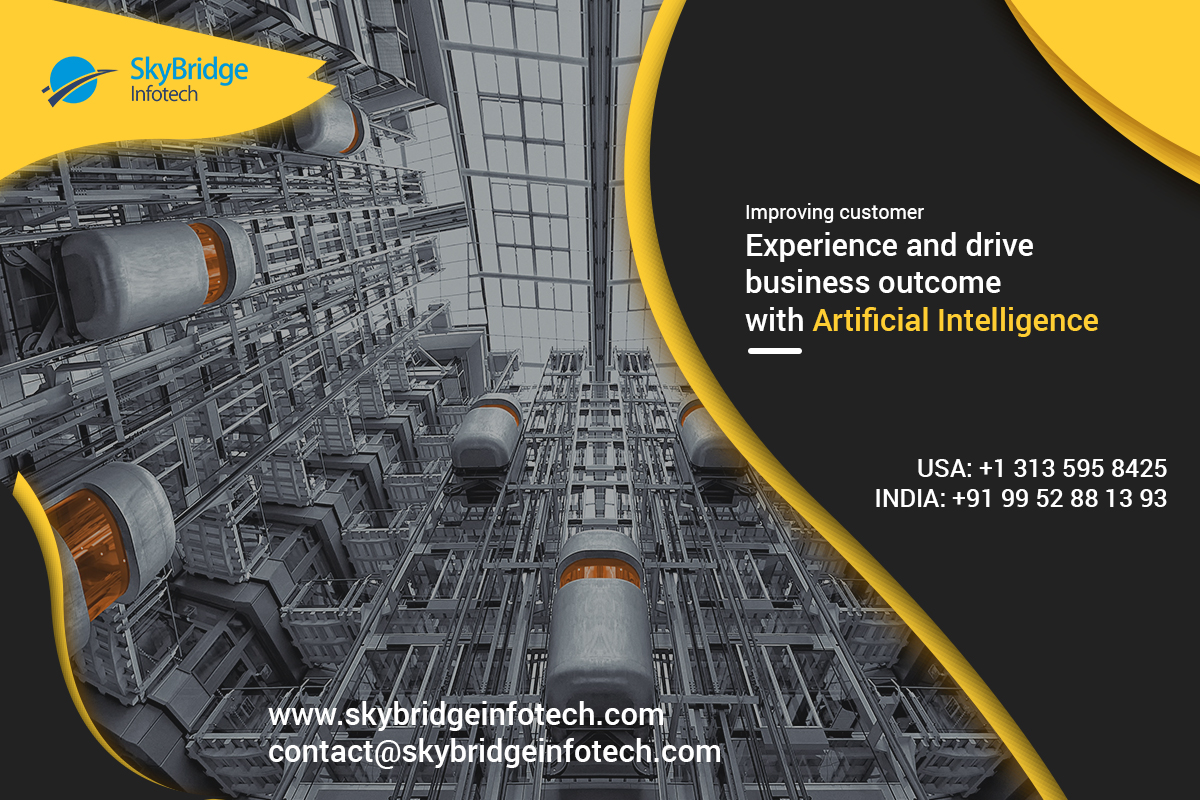Improving customer experience and drive business outcome with AI
So what is AI—artificial intelligence? I think it’s useful—at the risk of oversimplification—to state it this way: AI is machines that think and act like people. What that really means is that they need to understand and interpret data. To improve the customer experience, AI needs to be capable of processing data of various types—both structured and unstructured. For example, if AI sees a picture of an apple—unstructured data—it needs to know that is an apple.
We have to add intelligence to AI to make that happen. With real intelligence in AI, it can make reasonable conclusions about data. But even if AI can make educated decisions based on available data, that will be of little use if it cannot communicate with people. Therefore, to improve the customer experience, AI must be capable of seamless interaction with people, for example, through chatbots.
What is the future of AI? How will we use AI to improve the customer experience?
We’ve only scratched the surface of AI. That leads some long-range thinkers to ask, “What is the future of AI?” But the more immediate question for in-the-field practitioners is how will we use AI to improve the customer experience? The answer is AI will be used to drive many company processes. In addition to the customer experience, for marketing, there are three other primary processes for which AI will become increasingly instrumental:
- Driving business outcomes
- Differentiating customer segments
- Enhancing the employee experience (as a subset of customer experience)
And as a subset of customer experience, employee experiences offer companies a way to increase engagement as well as defray costs. For example, a chatbot could speak to an employee about IT support, using natural language processing within this narrow domain to diagnose IT issues and either resolve them or reroute them to appropriate departments.
AI has increasingly become part of everyday life. For example, if you use a Kindle and buy ebooks from Amazon, you’re getting recommended books for your ongoing reading. But how do you get so many recommendations so seamlessly? As AI becomes more accessible, it is less expensive to process information—increasing its ability to scale more data. For example, the algorithms that make these recommendations could be processing more than 100 million book-recommendation combinations, which combined with your previous reading and viewing patterns narrows the final recommendations to two or three books that you are likely to read.
Use AI to improve customer experience, not just for the sake of AI
As with any technology, the hype of what AI can accomplish sometimes outstrips reality. Real benefits will come from applying it to defined use cases and putting customers and their experience at the heart of what you are trying to achieve. Some business leaders have jumped on the AI bandwagon but struggle to quantify the outcomes. It all comes down to the pragmatic principle that nobody should implement AI for the sake of saying they have AI. But if you have real business outcomes driven by AI, which improves the customer experience, then use it.
AI is like IoT: it’s here to stay, accept it, or not. For example, many companies have access to social media data on the internet and mobile apps. If you have major operations in commerce, for example, you will want to be aware of social media conversations regarding customer sentiment as it pertains to your company, brand, and products. AI can analyze the sentiment of these social media conversations and use these insights to define customer interactions.
Start AI as a lean project: personalize a customer experience
Like any emerging technology making its way into the corporate enterprise, many people don’t know where to start with AI. I suggest you start lean-to demonstrate how AI can drive value for the enterprise. For example, you could automate and personalize the individual customer experiences, such as a microsite or tradeshow app. Experiment with different aspects using AI to automate and personalize the customer experience. However, work to keep the bigger picture and outcome in mind.
You’ll have to consider how AI will fit into your existing processes and to scale it for growth over an extended period of time. That’s because the long-term value of AI is ineffectively scaling and embedding it into existing processes once the value proposition has been proven and received buy-in from management. As another example, you could leverage your existing customer loyalty card in online commerce. Run a promotion online for those customers who supply their in-store customer loyalty card number. It should be relatively easy to capture that customer loyalty card data online with the right commerce and digital experience platform.
Every new amazing customer experience benchmarks the next
All said AI can make a qualitative difference in moving from personalizing customer experiences to individualizing customer experiences. But to do it, AI needs the ability to:
- Process both structured and unstructured data
- Derive reasonable conclusions from the data processed
- Automate processes
- Operate the customer experience end to end
When your AI-driven customer experience has all this, you can make every new amazing customer experience the new benchmark for your customer’s next experience. You can gain additional competitive advantage by mining for the right data to drive the right customer experiences at the right time. The most difficult aspect of that is handling real-time customer information by recognizing the right information to integrate while weeding out noise. Most importantly, you need the right digital experience platform and the most qualified partner to help drive those most amazing customer experiences.

